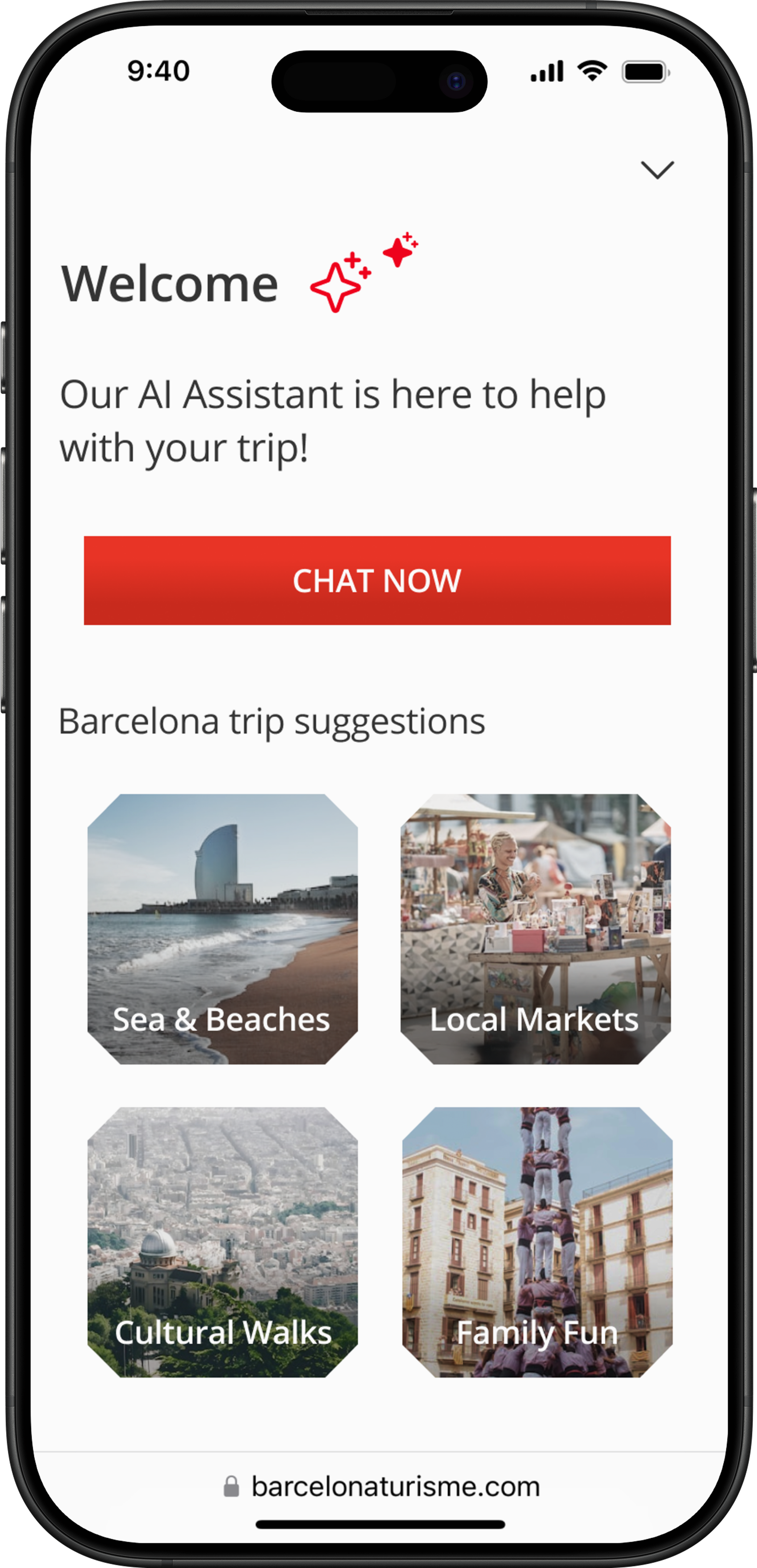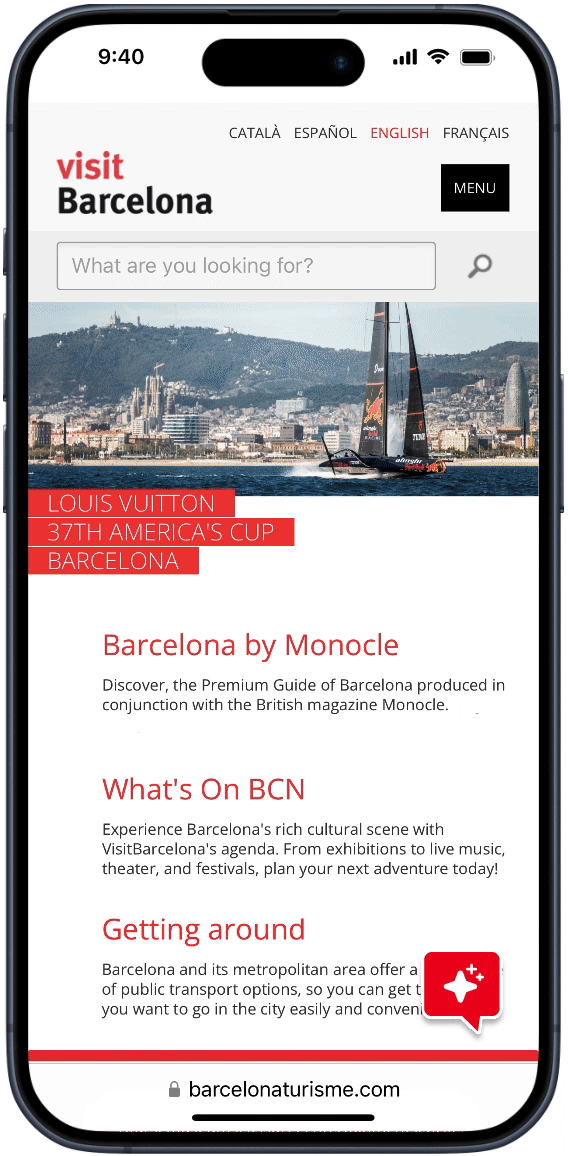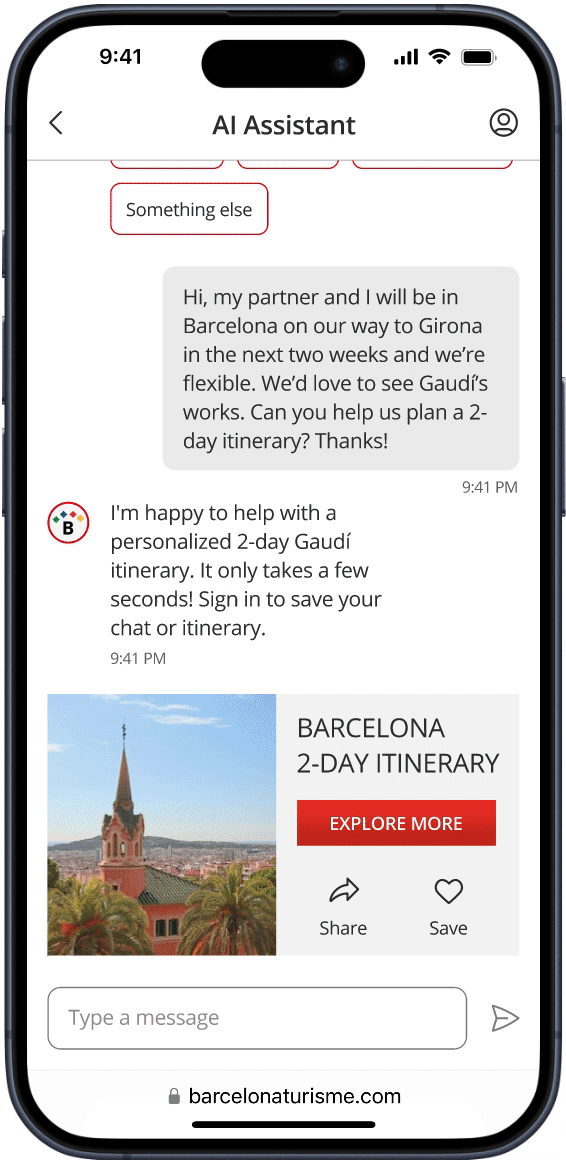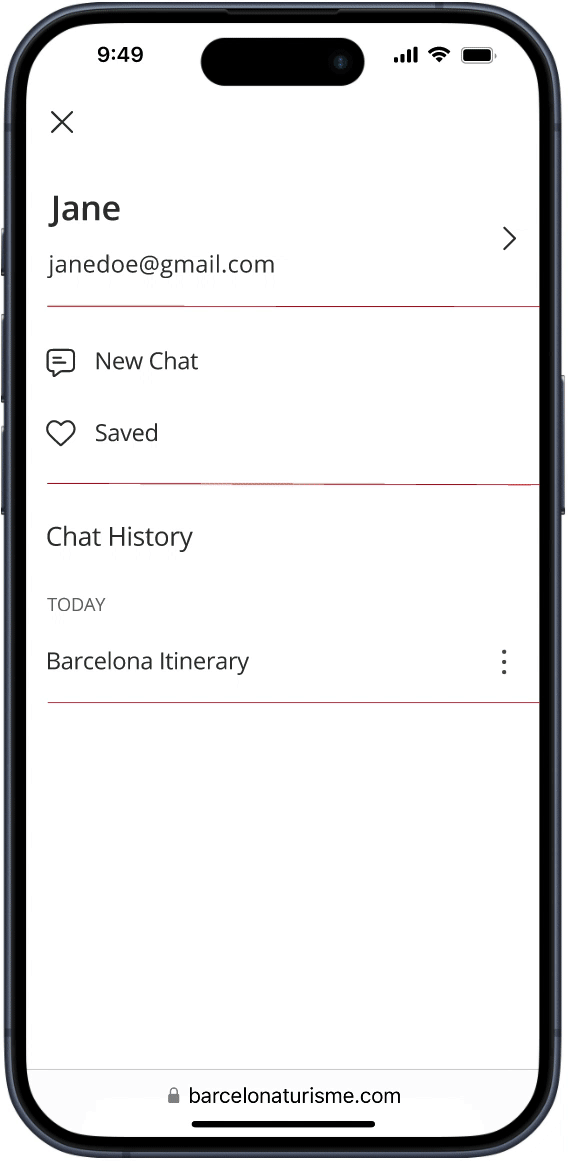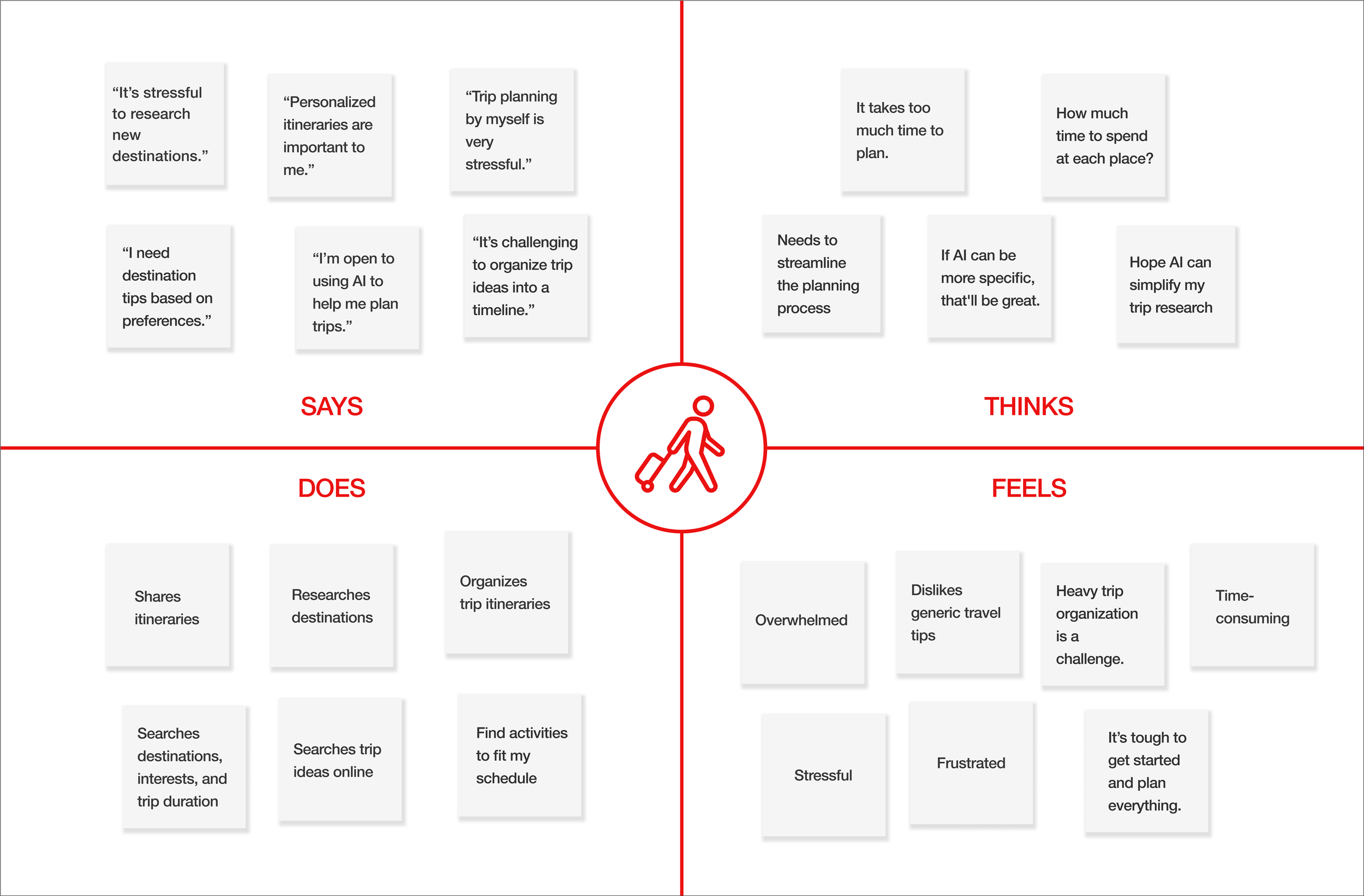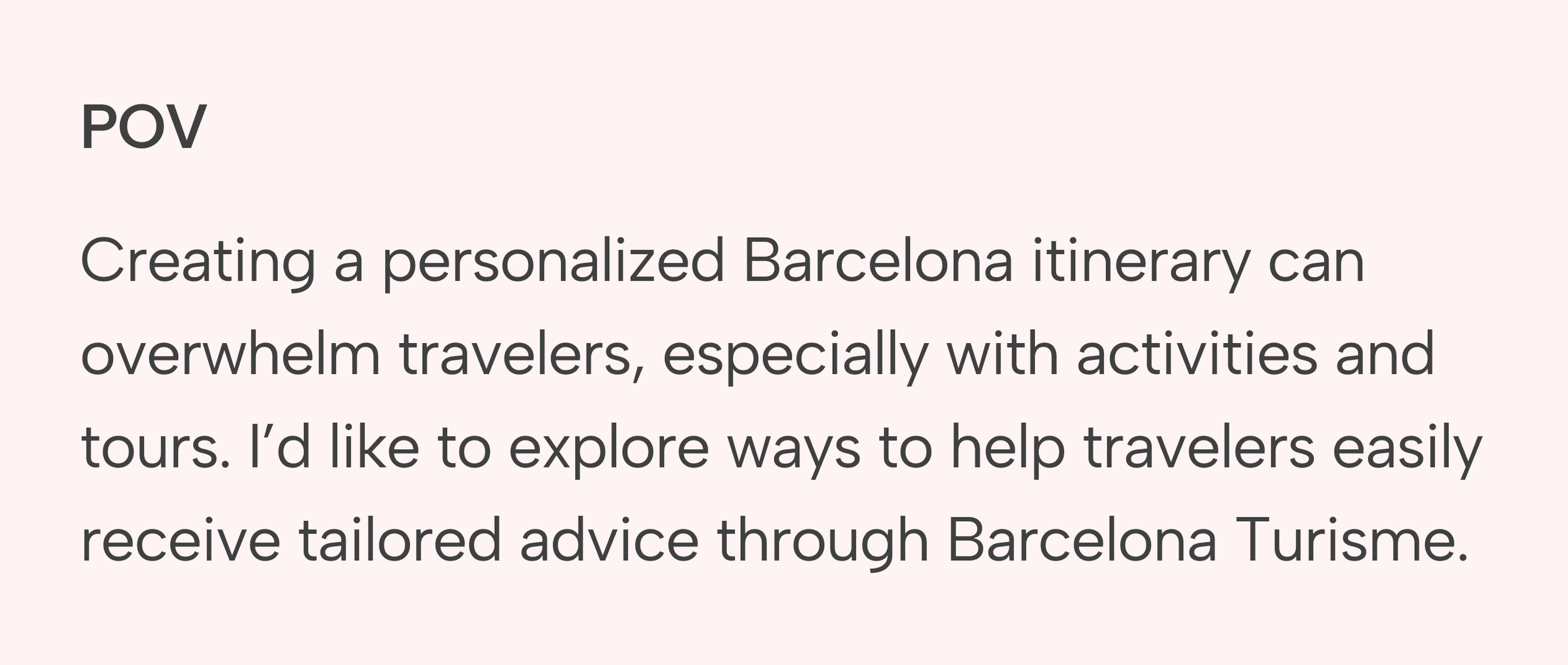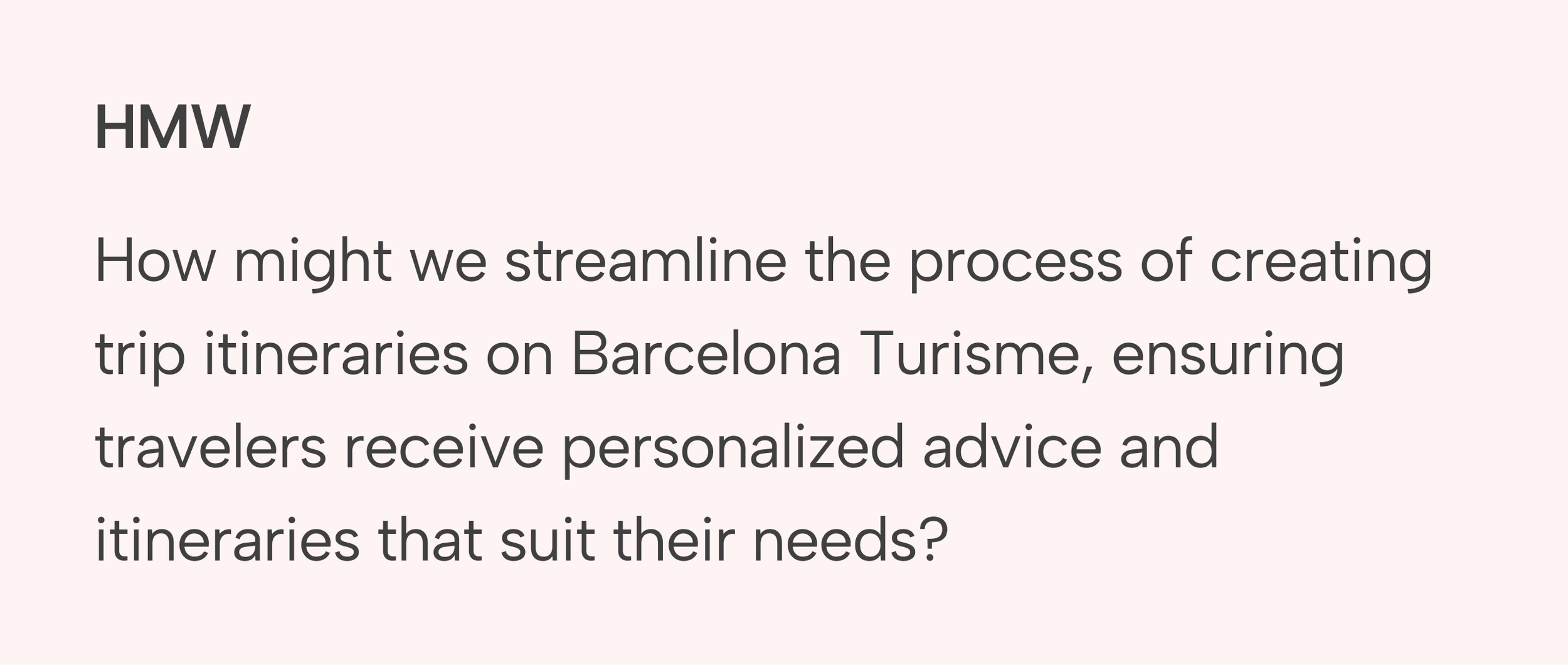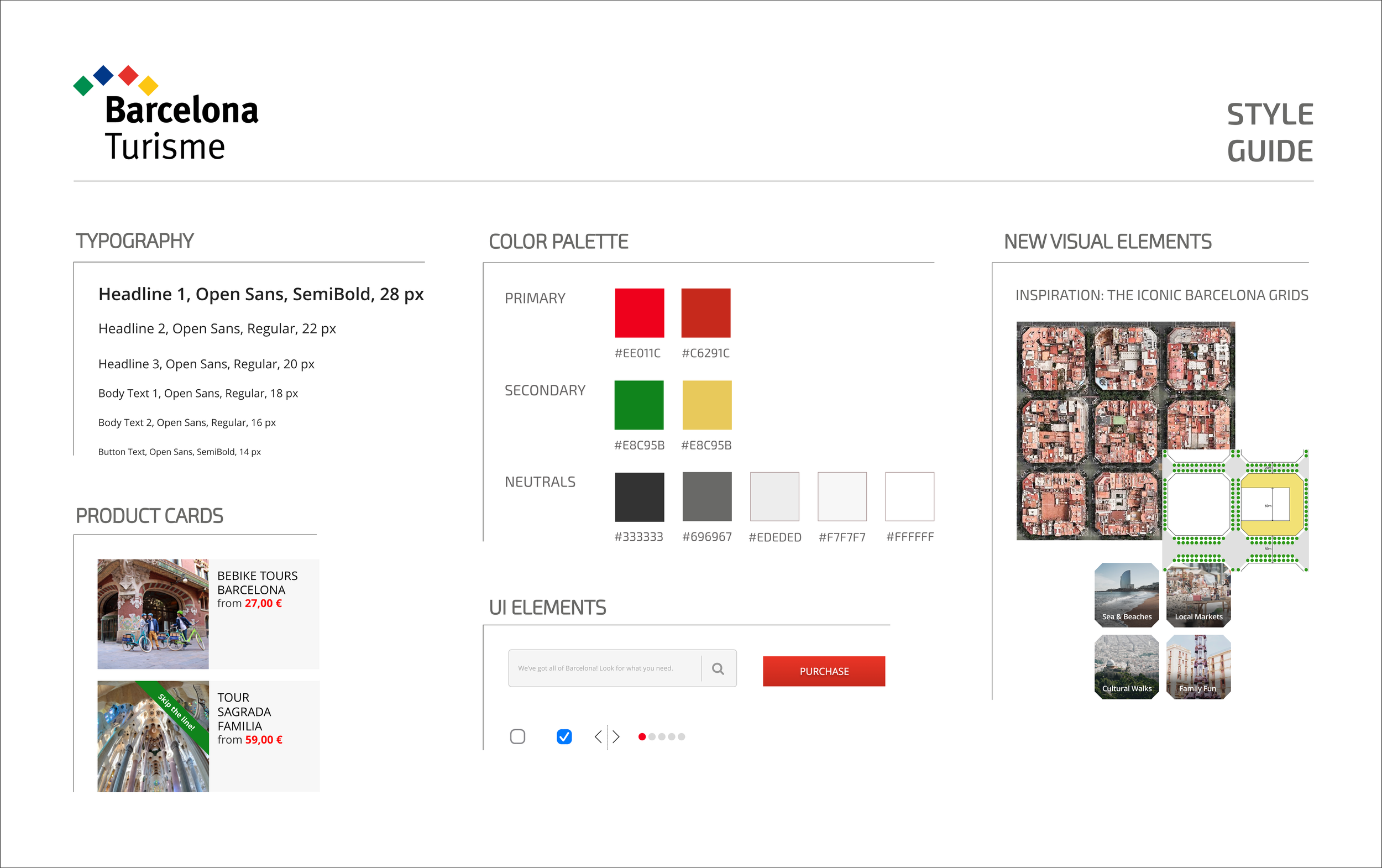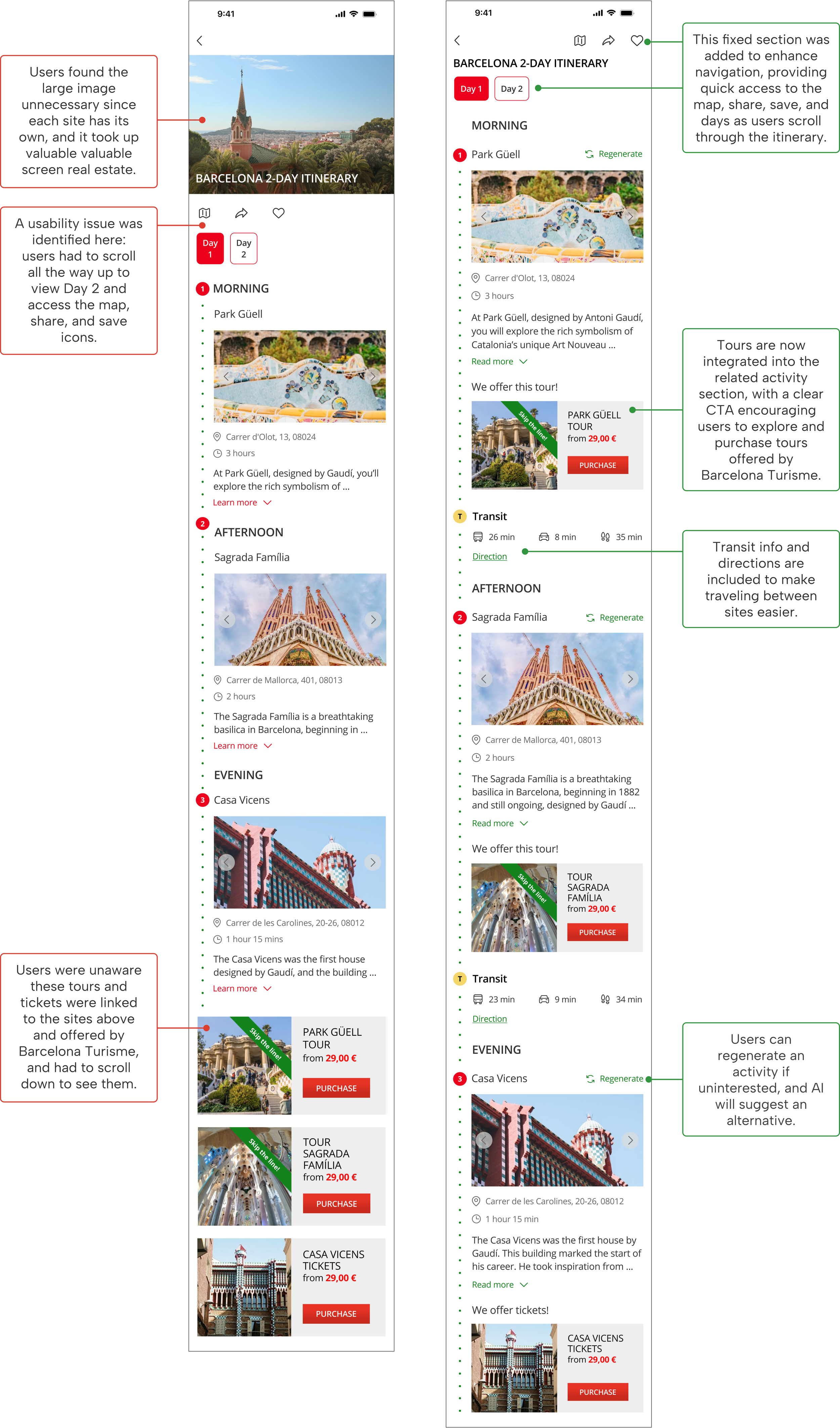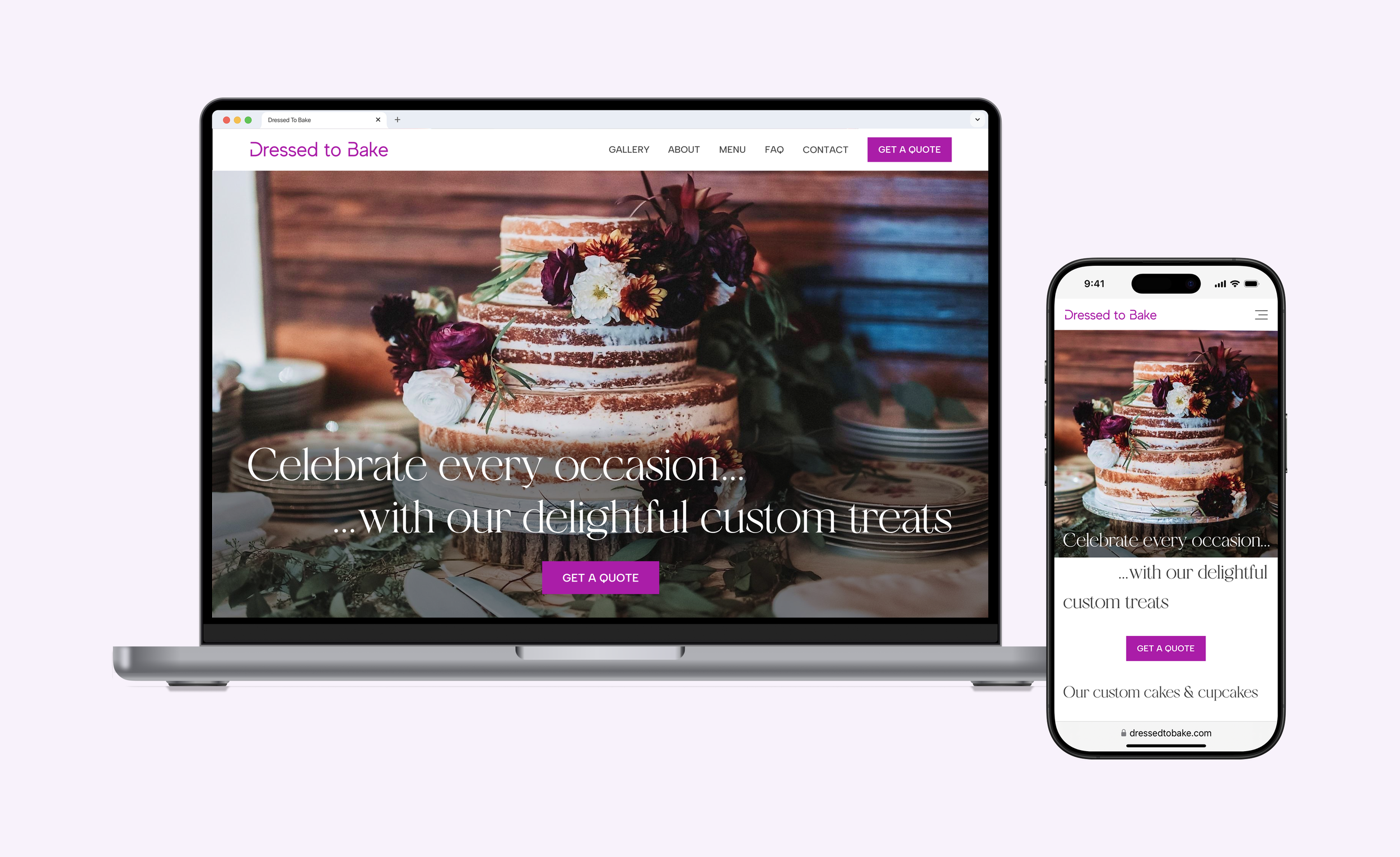Travel planning made simple: Barcelona Turisme’s AI travel assistant helps you create personalized itineraries with ease.
My Role
UX/UI Designer
UX Researcher
Project Type
Add a Feature
Concept
Timeline
6 Weeks
Tools
Figma
FigJam
Google Forms
Lyssna
Skills
UX/UI Design, User Research, User Interview, Ideation, Wireframing, Prototyping, User Testing
OVERVIEW
Barcelona Turisme is the go-to resource for travelers to Barcelona. The website provides travel information, guided tours, and event tickets to help travelers make the most of their Barcelona experience.
Barcelona Turisme, the city's official travel website
Context
The Barcelona Turisme website offers extensive travel information and 190+ activities, but creating personalized day-to-day itineraries with these activities is challenging. It’s time-consuming to find the most relevant details and sift through lengthy listings.
Creating personalized itineraries is challenging
Problem
An AI-powered travel planning feature was integrated into Barcelona Tourisme’s website to simplify trip planning and create custom itineraries. The 24/7 AI assistant offers personalized recommendations and personalized itineraries with curated activities from Barcelona Tourisme.
Introducing the AI travel assistant feature
Solution
Get travel advice from our AI assistant — ask anything!
Our AI travel assistant offers Barcelona recommendations and creates personalized itineraries. Just start a chat to get help — it’s quick and simple!
Personalized itineraries with a curated selection of activities
Barcelona Turisme showcases activities and tickets alongside relevant attractions, making purchases easier for travelers.
Save your itineraries and share them anytime!
Manage your chats, saved items, and share trip plans with your travel companions.
RESEARCH
Global AI adoption in the travel industry is evident, with industry leaders embracing AI to push their products and promote sales:
“Travel has become one of the most popular use cases for AI that Google, Microsoft, and OpenAI like to point to in demos, and firms like Tripadvisor, Expedia, and Booking.com have started to launch AI-powered vacation-planning products too.” (Source: MIT Technology Review)
Why an AI travel assistant feature?
Market Trends
(Source: Market.us)
I sent out a survey on users' AI usage in trip planning. While 72% have never used an AI tool to plan trips, 92% of participants are open to using AI. The willingness to use AI validated market trends, highlighting a great opportunity for AI integration in trip planning.
Are users open to using AI for trip planning?
Surveys & User Interviews
4/5 users valued personalized itineraries but found planning time-consuming and stressful.
3/5 users disliked multiple filter steps for trip advice, preferring a faster, more direct approach.
While AI is evolving to deliver more accurate results, users believe AI can speed up travel planning.
They preferred custom itineraries tailored to their interests, with easy sharing options.
Key insights from 5 moderated user interviews
Competitor Analysis
How are travel companies using AI?
I analyzed 3 travel companies offering AI-powered trip planning products to learn about how they utilize AI to assist travelers in planning their trips.
Key findings:
Companies primarily use two formats: a Gen AI chatbot for instant assistance, or a filter system followed by AI-suggested results.
Most AI features are free, but some require a paid upgrade.
Users need to sign in to view results or access their chat history.
DEFINE
Who we’re helping - travelers seeking for personalized travel advice and itineraries
Persona
I developed the user persona from insights gathered from user interviews. Anthony helped ensure the design process stayed aligned with user needs.
This step helped me understand how users feel, think, or act the way they do, fostering empathy by exploring their actions and emotions.
Empathizing and understanding our users
Empathy Map
How might we help travelers?
IDEATE
Task Flows
How users interact with the new feature
I focused on 3 task flows, outlining users' interactions with the AI travel assistant, and developed lo-fi wireframes for these interactions.
1. Ask the AI assistant to generate an itinerary and then refine it
2. Save an itinerary or product and view saved item
3. Share an itinerary with a travel companion
DESIGN
When working with an existing website, it’s important to align with the current UI, including the established font, color palette, and product card design, while smoothly integrating new visual elements for the added feature.
Integrating new visual elements into the existing UI
Style Guide
To gather user feedback before finalizing the design, I created mid-fi wireframes, refined them into hi-fi versions. I also made the prototype interactive with animations to simulate the chat flow. I considered findings from conducted initial user testing, and made adjustments to key screens:
Mid-fi to hi-fi: key screen adjustments
Initial Testing
Welcome page
Mid-fi
High-fi
Chat page
Mid-fi
High-fi
Itinerary page
Mid-fi
High-fi
TEST & ITERATE
I conducted usability testing with 15 participants on the Lyssna platform to assess the design, uncover issues, and identify improvement areas.
Testing with hi-fi wireframes & interactive prototype
Usability Test
Success metrics
Areas for Improvement
1. Revised the user page with a clearer label and improved consistency with the brand
Before
After
2. Another round of iteration on the itinerary page
Before
After
Final design
REFLECTION
The AI feature presented unique challenges due to its evolving nature. It challenged me to understand how AI is shaping the technology landscape and deepened my understanding of user perspectives in this space. This project was a valuable experience in working with an existing website, while also offering an exciting opportunity to explore AI-driven innovation within the travel industry.



